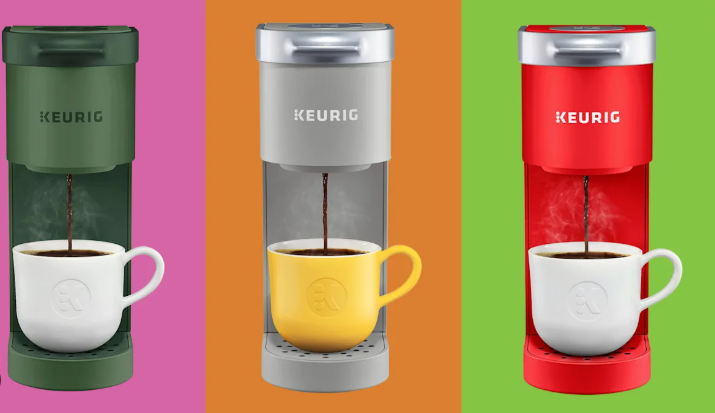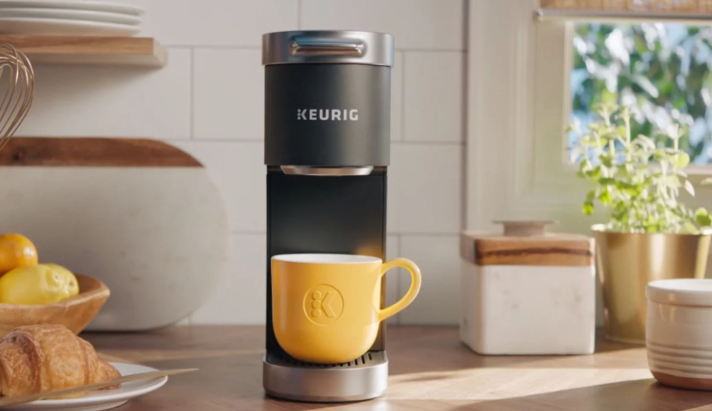Learning how to use a coffeemaker can turn your morning routine into a delightful experience, especially with the right tips and techniques. Whether you’re a beginner just starting out or someone looking to refine your skills, mastering how to use a coffeemaker ensures you get the most flavorful cup every time. In this detailed guide, we’ll walk you through everything from basic operation to advanced tricks, covering essential aspects like coffeemaker setup and coffeemaker maintenance. By understanding how to use a coffeemaker effectively, you can avoid common pitfalls and enjoy consistent results. We’ll also touch on related topics such as coffeemaker troubleshooting, coffeemaker cleaning, and even portable coffeemaker options for on-the-go brewing. So, grab your favorite beans, and let’s dive into how to use a coffeemaker like a pro.
Understanding the Basics: How to Use a Coffeemaker Effectively
Before diving into specifics, it’s important to grasp the fundamentals of how to use a coffeemaker. Most coffeemakers operate on similar principles: water is heated and passed through grounds to extract flavor. Knowing how to use a coffeemaker starts with selecting the right type—drip, single-serve, or French press—based on your preferences. For beginners, a drip model is often the easiest to learn how to use a coffeemaker, as it automates much of the process.
To get started with how to use a coffeemaker, always read the manual for your specific model, as features can vary. The key steps in how to use a coffeemaker include measuring water and coffee, inserting a filter if needed, and pressing start. Consistency is crucial in how to use a coffeemaker, so use the same ratios each time—typically one to two tablespoons of grounds per six ounces of water. As you become comfortable with how to use a coffeemaker, you can experiment to find your perfect brew.
One common question in learning how to use a coffeemaker is about grind size: medium for drip machines works best to avoid bitterness or weakness. Understanding how to use a coffeemaker also involves knowing when to replace parts like filters or carafes for optimal performance. With practice, how to use a coffeemaker becomes second nature, leading to better-tasting coffee every day.
Coffeemaker Setup: The First Step in How to Use a Coffeemaker
Proper coffeemaker setup is the foundation of mastering how to use a coffeemaker. Begin by unboxing your machine and washing all removable parts, such as the carafe and filter basket, with warm soapy water. This initial coffeemaker setup removes any manufacturing residues that could affect taste when you learn how to use a coffeemaker.
Next in coffeemaker setup, place the machine on a stable, level surface near an outlet, ensuring good ventilation around it. Fill the reservoir with fresh, cold water—filtered if possible—to the max line during this coffeemaker setup phase. Run a brew cycle without coffee to clean the internal system, a crucial step before your first real use of how to use a coffeemaker.
Finally, insert the filter basket and, if using one, a paper or reusable filter. This completes the coffeemaker setup, setting you up for success in how to use a coffeemaker. For more on getting started, our coffeemaker recommendations include models with easy assembly.
Step-by-Step: How to Use a Coffeemaker for Perfect Results
Now that setup is done, let’s break down how to use a coffeemaker in simple steps. First, measure your coffee grounds—use a scoop for accuracy, aiming for the right ratio to avoid weak or bitter brews when practicing how to use a coffeemaker.
Pour the grounds into the filter basket, ensuring they’re level for even extraction—this is a key part of how to use a coffeemaker effectively. Fill the reservoir with the corresponding amount of water, using the markings as a guide in how to use a coffeemaker.
Close the lid securely and press the start button; most machines will handle the rest, but monitor the process as you learn how to use a coffeemaker. Once brewing is complete, pour and enjoy— that’s the essence of how to use a coffeemaker for daily satisfaction.
For variations in how to use a coffeemaker, adjust the strength setting if available, or experiment with different grind sizes. Remembering these steps will make how to use a coffeemaker second nature.
How to Brew Coffee in a Coffeemaker: Tips for Flavorful Cups
Knowing how to brew coffee in a coffeemaker starts with selecting fresh beans or grounds, as stale coffee can ruin the experience. In how to brew coffee in a coffeemaker, grind your beans just before use if possible, opting for a medium grind to balance extraction.
The process of how to brew coffee in a coffeemaker involves preheating the machine for some models, ensuring hotter water for better flavor. Add the grounds to the filter, then start the cycle—timing is key in how to brew coffee in a coffeemaker to avoid over-extraction.
To perfect how to brew coffee in a coffeemaker, use filtered water to remove impurities that affect taste. After brewing, stir the pot for uniformity in how to brew coffee in a coffeemaker. For expert advice on how to brew coffee in a coffeemaker, our brewing tips section offers more insights.
Coffeemaker Troubleshooting: Common Problems and Fixes
Even with proper use, coffeemaker troubleshooting may be needed if your machine acts up. A common issue in coffeemaker troubleshooting is no brewing, often due to a clogged filter—clean it thoroughly to resolve.
For weak coffee in coffeemaker troubleshooting, check the ratio of grounds to water and adjust accordingly. Overflow during brewing requires coffeemaker troubleshooting by ensuring the carafe is properly placed.
If the machine leaks, coffeemaker troubleshooting involves inspecting seals and tightening components. For electrical issues in coffeemaker troubleshooting, unplug and reset the unit. Regular coffeemaker troubleshooting prevents major problems, keeping your machine reliable.
Preventing Coffeemaker Troubleshooting with Proper Care
To minimize coffeemaker troubleshooting, perform routine checks like descaling every month. Avoiding overfilling during use reduces the need for coffeemaker troubleshooting. Keeping the machine clean is the best way to prevent coffeemaker troubleshooting scenarios.
Coffeemaker Cleaning: Keeping Your Machine Sparkling
Regular coffeemaker cleaning is vital to maintain flavor and hygiene. Start coffeemaker cleaning by emptying the basket and rinsing it after each use to remove residue.
For deeper coffeemaker cleaning, run a cycle with equal parts vinegar and water monthly, followed by water rinses to eliminate the smell. Wipe the exterior during coffeemaker cleaning to keep it looking new.
Don’t forget the carafe in coffeemaker cleaning—soak it in soapy water if stains appear. Consistent coffeemaker cleaning extends the life of your machine and ensures better-tasting coffee.
Deep Coffeemaker Cleaning Techniques
For thorough coffeemaker cleaning, disassemble removable parts and scrub with a soft brush. Use baking soda for stubborn spots in coffeemaker cleaning. This level of coffeemaker cleaning should be done quarterly.

Portable Coffeemaker: Taking Your Brew on the Go
A portable coffeemaker is a great companion for travel, allowing you to enjoy fresh coffee anywhere. Learning how to use a coffeemaker in portable form involves compact designs that brew single cups quickly.
Coffeemaker setup for a portable coffeemaker is minimal—pack grounds, add water, and plug into a car adapter if needed. How to use a coffeemaker portable style means manual pressing or battery operation for convenience.
With a portable coffeemaker, coffeemaker troubleshooting is rare due to simple mechanics, but check batteries if it fails. A portable coffeemaker extends the joy of how to use a coffeemaker beyond home.
Choosing the Best Portable Coffeemaker
When selecting a portable coffeemaker, look for lightweight models with reusable filters. Consider battery life in your search for a portable coffeemaker that complements how to use a coffeemaker on the road. For recommendations, our coffee guide has portable picks.
Coffeemaker Tips: Expert Advice for Better Brewing
Our coffeemaker tips start with using fresh, filtered water to improve taste when learning how to use a coffeemaker. Another coffeemaker tip is to grind beans just before brewing for maximum flavor.
For coffeemaker tips, experiment with ratios—try 1:15 for stronger coffee in how to use a coffeemaker. Clean your machine regularly as per coffeemaker tips to avoid off-flavors.
One of the best coffeemaker tips is to preheat the carafe for hotter pours when mastering how to use a coffeemaker. Store beans in an airtight container per coffeemaker tips for freshness.
Advanced Coffeemaker Tips for Flavor Enhancement
Advanced coffeemaker tips include adding cinnamon to grounds for a spiced twist in how to use a coffeemaker. Use a scale for precise measurements in coffeemaker tips.
Coffeemaker Maintenance: Keeping Your Machine in Top Shape
Coffeemaker maintenance begins with daily wiping to remove spills and prevent buildup. Monthly coffeemaker maintenance involves descaling to clear mineral deposits.
Check seals during coffeemaker maintenance to avoid leaks. Proper coffeemaker maintenance extends the life of your machine, ensuring reliable performance.
Store in a dry place as part of coffeemaker maintenance to avoid mold. Regular coffeemaker maintenance ties into mastering how to use a coffeemaker.
Seasonal Coffeemaker Maintenance Tips
In winter, increase descaling frequency for coffeemaker maintenance due to harder water. Summer coffeemaker maintenance focuses on drying to prevent humidity issues.
Best Coffeemaker Guide: Selecting the Right Machine
Our best coffeemaker guide starts with assessing your needs—capacity, type, and features. In the best coffeemaker guide, drip models suit beginners learning how to use a coffeemaker.
The best coffeemaker guide recommends checking reviews for reliability. Consider energy efficiency in your best coffeemaker guide search.
For the ultimate best coffeemaker guide, match the machine to your brewing frequency and style.
Coffeemaker Safety: Important Guidelines to Follow
Coffeemaker safety begins with placing the machine on a stable surface to prevent tips. Unplug during coffeemaker safety checks or when not in use.
Avoid overfilling to ensure coffeemaker safety and prevent spills. Coffeemaker safety includes using auto-shutoff models for peace of mind.
Keep cords away from edges in coffeemaker safety practices. Teach family members coffeemaker safety when showing how to use a coffeemaker.
Essential Coffeemaker Safety Tips
One coffeemaker safety tip is to never leave the machine unattended while brewing. Use heat-resistant mats under the machine for coffeemaker safety.

Conclusion: Mastering How to Use a Coffeemaker for Lifelong Enjoyment
In wrapping up this guide on how to use a coffeemaker, we’ve covered the essentials from setup to advanced tips, ensuring you can brew with confidence. Remembering how to use a coffeemaker involves practice, but with proper care, your machine will serve you well. Incorporate coffeemaker troubleshooting, coffeemaker cleaning, and coffeemaker maintenance into your routine for optimal results. Whether at home or with a portable coffeemaker, how to use a coffeemaker opens up a world of flavorful possibilities. Follow coffeemaker tips and coffeemaker safety for safe, delicious coffee every time. For more resources on how to use a coffeemaker, our coffee guide is an excellent next step. Happy brewing!
- Master how to use a coffeemaker with consistent practice.
- Regular coffeemaker cleaning prevents issues.
- Prioritize coffeemaker safety for worry-free use.